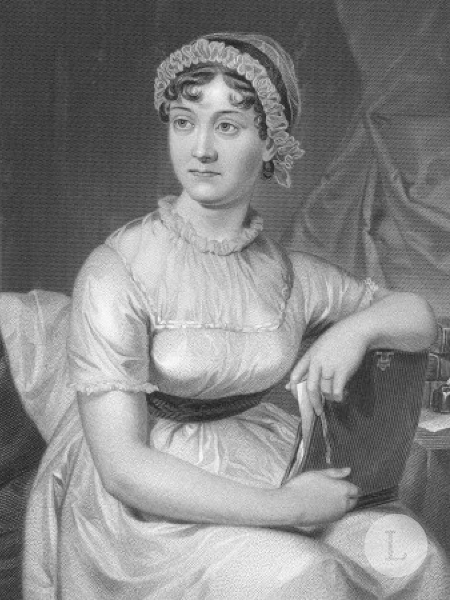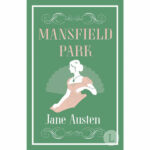Love and Friendship is a collection of early works by the renowned English novelist Jane Austen, who is best known for her classic novels such as Pride and Prejudice and Sense and Sensibility. This compilation, published posthumously in 1922, consists of various short stories, letters, and other writings created by Austen when she was a teenager, between the ages of 14 and 17. The pieces in Love and Friendship provide a fascinating glimpse into the early development of Austen’s literary talent, showcasing her wit, keen observations of human nature, and her signature satirical style.
BOOK INFO
version: CLASSIC, EBOOK, AUDIOBOOK
number of pages: 70
literary movement: ROMANTICISM
literary genre: ROMANCE
1st edition: 1922
years of writing: around 1790
SUMMARY
The most well-known piece in the collection is the eponymous novella, Love and Friendship, which is written in the form of a series of letters between two young women, Laura and Marianne. The story is a parody of the romantic and sentimental novels that were popular during Austen’s time, poking fun at their melodramatic plotlines and exaggerated emotions. Laura and Marianne’s correspondence chronicles their romantic escapades and misfortunes, full of swooning heroines, dashing suitors, and dramatic twists of fate.
Another notable work in the collection is Lesley Castle, which is also presented as an epistolary narrative. The story focuses on the lives and romantic entanglements of two sisters, Margaret and Charlotte, who reside in the titular castle. Austen uses this piece to satirize the aristocracy and their frivolous concerns, exposing the superficiality and insincerity that lies beneath their polished exteriors.
In addition to these longer pieces, Love and Friendship contains a variety of shorter works, including The History of England, which is a humorous and irreverent retelling of English history. Austen playfully subverts the conventions of historical writing, injecting her own commentary and personal biases into the narrative. The collection also features several other short stories, as well as a collection of poems and other miscellaneous writings.
Throughout Love and Friendship, readers will recognize Austen’s distinctive voice and her keen ability to capture the nuances of human relationships and social dynamics. Although these early works may lack the depth and complexity of her later novels, they offer a valuable insight into the development of her literary skills and her unique perspective on the world.
MAIN CHARACTERS
Laura
She is one of the two main female characters and the primary narrator of the story. Laura is a romantic and impulsive young woman who often makes poor decisions in her relationships. She shares her life experiences through letters to her friend Marianne’s daughter.
Marianne
She is Laura’s best friend and confidante. Marianne shares many of Laura’s romantic ideals and is also known for her impulsive nature. Their friendship is at the core of the story.
Isabel
A character introduced early in the story, Isabel is Laura’s friend who shares her romantic sensibilities. She plays a minor role in the novel, acting mainly as a connection between Laura and Marianne.
Sophia
She is Marianne’s daughter and the recipient of Laura’s letters. Sophia serves as a stand-in for the reader, learning about Laura and Marianne’s adventures through the correspondence.
Edward
Laura’s husband, who is initially portrayed as an ideal romantic partner. However, as the story progresses, his flaws become apparent, and his relationship with Laura is revealed to be far from perfect.
Augustus
Marianne’s husband and Edward’s friend. He is also a romantic character with a penchant for dramatic gestures. His impulsive behavior often lands him in trouble.
These characters contribute to the satirical portrayal of romantic relationships and friendships in Love and Friendship.
Run mad as often as you choose, but do not faint!
JANE AUSTEN
TOP 10 POINTS
- Juvenile Work: Love and Friendship is one of Austen’s earliest works, written between 1790 and 1793.
- Epistolary Novel: The story is told through a series of letters between characters.
- Satire: The novel is a parody of romantic novels popular in Austen’s time.
- Humor: Austen’s wit and humor are evident even in her early writing.
- Female Friendships: The story focuses on the strong bond between two female friends, Laura and Marianne.
- Romantic Relationships: The novel explores the themes of love, courtship, and marriage, which would later become central to Austen’s mature works.
- Social Commentary: Austen satirizes societal norms and expectations of her time, such as the emphasis on wealth and social status.
- Style: Love and Friendship features the sophisticated language and wit that would become characteristic of Austen’s later novels.
- Private Circulation: The work was initially written for the amusement of Austen’s family and friends and not published during her lifetime.
- Posthumous Publication: Love and Friendship was first published in 1922, more than a century after it was written.
AT THE END
Overall, Love and Friendship is an essential read for fans of Jane Austen, as well as those interested in the origins of one of the most celebrated authors in English literature. The collection demonstrates Austen’s remarkable talent as a young writer, revealing the wit, humor, and keen observation that would later become the hallmarks of her beloved novels.
ABOUT WRITER

Jane Austen was a prolific and influential English novelist, who is best known for her six major novels. These novels are widely celebrated for their wit, social observation, and exploration of the human experience. Born in the small village of Steventon, Hampshire, Austen’s early life shaped her writing, providing a rich source of inspiration for her novels.



